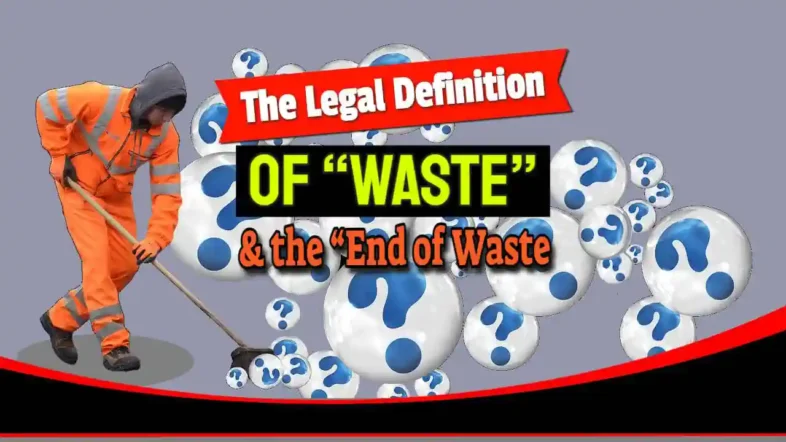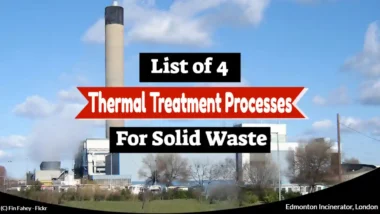Unravelling the legal definition of waste in British law.
Understanding what counts as waste has always been tricky, but nowadays recycling makes it more so. One key fact is that laws do help define when something is waste, but they can soon become restrictive if you take a waste, and process it in some way to give it value, and you cannot sell it because it is still legally classified as waste!
All authorities have to be careful about this, though. Waste must be disposed of responsibly by trustworthy borganisations. There have been many cases when villains would love to charge waste disposal charges, fill up rented warehouses with waste, and run off with the profit. The legal definition of waste, and Waste Management Regulations that require licensing for waste companies is the way that illegal dumping is controlled and waste crime prevented.
This article will show you how to know if something is considered waste and when it’s not anymore under the “End of Waste” rules.
Let’s learn together!
Key Takeaways for the Legal Definition Of “Waste”
- Laws help us know when something is waste or not. For example, if a material can be recycled and used like new, it might not be waste anymore.
- We use certain tests to see if something is still waste. The by-product test checks if the material was meant to be thrown away. If it wasn’t and can be used again without extra processing, it’s probably not a waste.
- There are rules about what doesn’t count as waste. Things like old chairs reused in a community centre or ash from power stations used in construction don’t count as waste because they’re being used again directly.
- Waste management involves different steps: recovery, reuse, recycling, and disposal. Each step helps turn trash into useful things again and keeps our planet cleaner.
- When materials meet special conditions for safety and use, they reach the “end of waste” stage. This means they aren’t considered trash anymore and can have a new life as something valuable.
The Legal Definition of Waste
Determining if a material is waste can be complex and requires careful consideration. Some materials considered waste include spent solvents, scrap metal, and packaging waste. Certain exclusions from the waste rules apply to activities such as composting or recycling at home.
Scroll down to the “definitions” section below for a detailed definition of waste.
All the information provided in our articles is for general educational purposes, but not to be relied upon to make commercial decisions. Always obtain expert advice on waste classification matters. Do not rely on this information. Regulations will vary according to your location and over time.
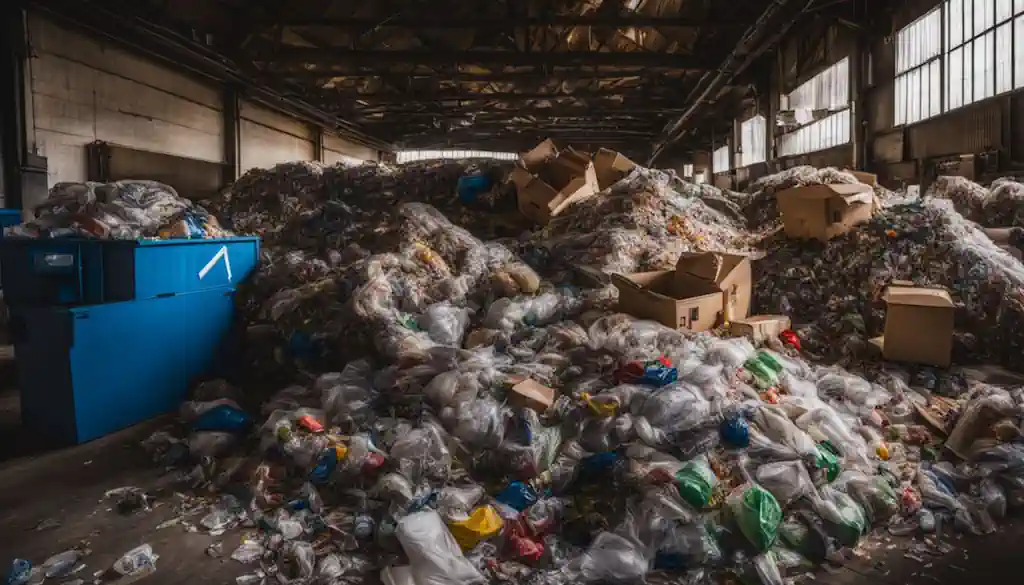
Our Guide on How to determine if a material is waste or not
Determining if a material is waste involves applying specific tests. These include the by-product test and the end-of-waste test.
- Apply the by-product test: This method checks if a material is originally intended for discarding. If the answer is no, and it serves another purpose directly without needing to be processed further, it may not be waste.
- Use the end-of-waste criteria: Materials that have gone through recycling or recovery and can now be used like raw materials may no longer be considered waste. This change happens when they meet certain conditions ensuring their safe use.
- Refer to the Waste Regulations which are close to being legal guidance: The Environment Agency (England) offers guidelines for understanding if a material stops being waste. My team once consulted these documents for a project on recycled plastics, ensuring we followed regulations accurately.
- Consider the purpose of reuse: Materials intended for immediate reapplication in another process are generally not deemed waste because they avoid disposal and find new utility.
- Examine exclusion rules: Some materials are explicitly excluded from being classified as waste under the law. Knowing these exceptions helps in making informed decisions about the materials’ status.
- Consult with environmental regulators: For complex cases, reaching out to bodies like the Environment Agency clarifies whether a substance should be treated as waste or not. Their expert insight can guide proper classification and handling methods.
- Check if operations result in a change of status: Certain recovery actions do not automatically mean a material ceases to be waste according to legal definitions; examining each operation’s outcome is essential.
- Duty of Care Code of Practice Adherence: Ensuring compliance with this code aids in correctly identifying if an item falls under the category of waste, thereby fulfilling legal responsibilities effectively.
Every case may present unique challenges but using these strategies provides a strong foundation for accurate classification and responsible management of materials in environmental projects or waste management practices.
Examples of when a material is considered waste
A material becomes waste when it is no longer needed or wanted and gets thrown away. For example, if a business closes and leaves office furniture behind, that furniture is now waste.
This also happens in factories when they have leftover materials like metal scraps or sawdust after making products. Even at home, food you don’t eat and throw out turns into household waste (food waste).
During my time working with a local council on waste management projects, I’ve seen many cases of end-of-waste scenarios. One instance involved reprocessing old electronic gadgets into refurbished items for sale in second-hand shops.
This process turned potential waste into valuable products again. Similarly, scrap metal from construction sites was collected and sent to be melted down and reused instead of being treated as rubbish.
Both examples highlight how what we might consider waste can start a new life as something useful again through recycling and recovery operations.
Exclusions from waste rules
Understanding what counts as waste helps us manage it better. We also need to know when materials are not waste according to law. This brings us to exclusions from waste rules, a crucial part of waste management.
- Direct Reuse Without Treatment: I once had a project where we took old office chairs and used them in a community centre. These chairs did not undergo any treatment or change; they were simply cleaned. This direct reuse means they were not considered waste.
- By-products Not Wasted: In many industries, one process’s by-product can serve another purpose elsewhere without needing to be discarded. For instance, ash from power stations can be used in construction materials. Since these materials have a second life without disposal, they do not fall under waste rules.
- Materials Meeting End-of-Waste Criteria: Certain goods can stop being viewed as waste if they meet specific standards set out in quality protocols. For example, glass recycled into sand for landscaping must reach a purity level that makes it fit for use again.
- Exemptions for Agricultural Practices: Some activities in farming produce residues reused directly on fields as fertilisers or soil conditioners, like straw or animal manure. These practices are exempt because they return valuable nutrients back to the earth and continue the cycle of use.
- Household Exclusions: Not everything unwanted in your home is technically waste until you decide to dispose of it. Items you plan to sell at a garage sale or donate to charity remain personal belongings and are excluded from being classified as waste.
- Safe Recycling on Site: Materials recycled right where they are produced often bypass the tag of being called waste—for example, reprocessing manufacturing offcuts into new products on the same factory floor.
- Wastes Used as Fuel: Some wastes cease to be ‘waste’ when used as fuel for energy recovery in specially permitted facilities. This includes certain types of biomass that can help generate power and heat buildings.
Each exclusion plays a role in reducing what goes into our landfills and incinerators, guiding us toward more sustainable handling of resources.
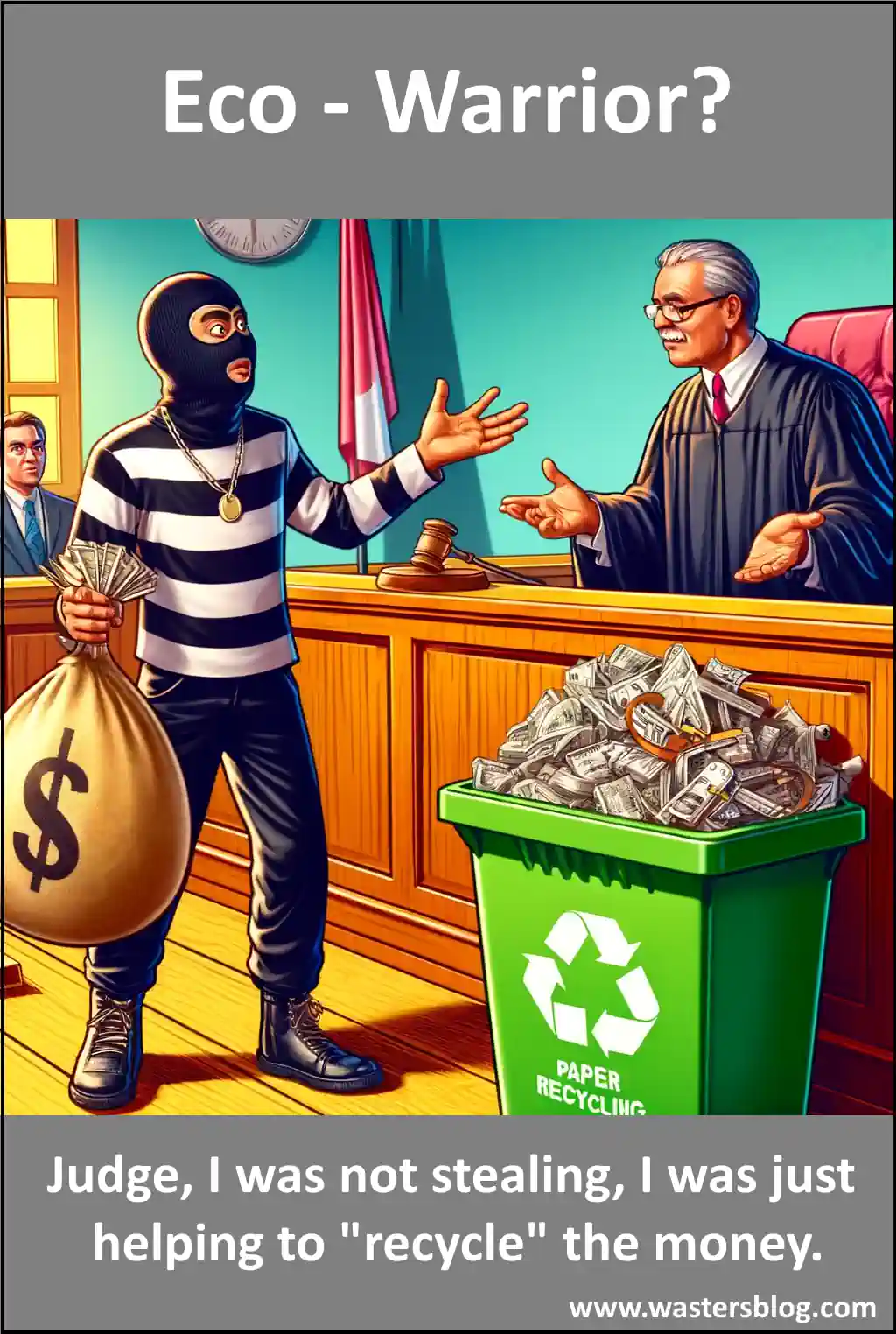
Activities and Operations Where Waste Rules Apply
Waste rules govern activities like recovery, recycling, and disposal. These regulations also apply to operations involving the preparation for reuse of materials.
Recovery, preparation for reuse, recycling, and disposal
Recovery, preparation for reuse, recycling, and disposal play key roles in managing waste. These processes help turn unwanted materials back into useful resources. Here are the main steps:
- Recovery: This step involves taking waste and finding another use for it. For example, food waste can power energy recovery facilities to produce electricity.
- Preparation for Reuse: Items like electronics can get a second life here. Trained professionals check, clean, repair, and refurbish them. I once saw an old laptop transformed into one almost as good as new.
- Recycling: Recycling turns materials like plastic, glass, paper, and metals into new products. It reduces the need to extract raw materials from Earth, saving energy and cutting pollution.
- Disposal: When waste cannot go through the above processes, it heads to disposal. The most common methods are landfilling and incineration without energy recovery.
Each step is crucial for reducing the impact of waste on the planet. Through these actions, we not only conserve natural resources but also lower greenhouse gas emissions and protect ecosystems.
The “End of Waste” and When Waste Rules Do Not Apply
– Waste rules may not apply when a material is reused and does not become waste.
– When a material is a by-product and not considered waste, waste rules do not apply.
When a material is reused and does not become waste
Materials find new life through re-use, avoiding the waste label. For example, second-hand shops and scrap metal dealers play a crucial role in this process. They transform unwanted items into valuable resources again.
This action supports sustainability by lessening the need for raw materials.
The concept of “end of waste” kicks in here. Once something is reused, it no longer meets the definition of waste under regulations like the Waste Framework Directive from the European Commission.
This shift not only helps protect our environment but also promotes a circular economy where products get a second chance instead of heading to disposal sites.
When a material is a by-product and not waste
Shifting from the topic of reuse, we now explore materials classified as by-products rather than waste. A material becomes a by-product if it results from a production process but is not the main goal.
This distinction is vital for environmental protection and waste management practices. By-products must meet certain criteria to avoid being labelled as waste. They should be ready for use without further processing, have genuine usefulness, and not harm the environment or human health.
For example, in metalworking or mining operations, slag can emerge as a by-product. Instead of discarding it as waste, industries find uses for slag in construction or manufacturing, thus adhering to regulations set forth under laws such as the Environmental Protection Act 1990.
This approach supports reducing landfill usage and promotes recycling efforts within sectors dealing with ameliorative waste management practices.
Conclusion and Contacting Environmental Regulators
Grasping the legal definition of waste and understanding when something stops being waste are key. These ideas help us manage trash better and respect our planet. Knowing the rules can turn old materials into useful things again.
This saves raw materials and helps the Earth.
If you face challenges, reach out to environmental regulators for advice. They can guide you through the process with their expertise. Taking these steps not only keeps our environment cleaner but also supports recycling efforts.
Let’s make a difference by applying what we’ve learned about managing waste wisely. Every small action leads to a bigger impact on our planet’s health. Start today by seeing how you can reduce, reuse, and recycle more effectively in your community!
The Legal Definition Of “Waste” – FAQs
1. What does “waste” mean in law?
In the context of waste management regulations, “waste” refers to materials that their owner is discarding or intends to discard. This includes substances or objects that the holder disposes of, intends to dispose of, or is required to dispose of by the provisions of national law.
2. What are waste management regulations?
Waste management regulations typically require the proper handling, treatment, and disposal of these materials to minimize their impact on the environment and human health. They also encourage practices such as waste minimization, recycling, and recovery to reduce the amount of waste entering landfills or being incinerated.
3. What is fly-tipping and why is it illegal?
Fly-tipping involves illegally dumping waste on land that doesn’t have the licence to accept it. It’s illegal because it can harm the environment and public health.
4. How do courts determine when something is no longer “waste”?
The European Court of Justice provides guidelines for determining the end of waste status. When recycled goods can be used safely and effectively like new products without harming humans or the environment, they may no longer be classified as waste.
5. What remedies exist for dealing with legal issues around waste?
Legal remedies for issues related to waste might include court orders demanding cleanup operations or monetary damages paid by those responsible for creating hazardous conditions negligently.
ARCHIVE – OUR ORIGINAL ARTICLE FOLLOWS:
The Legal Definition of “Waste” and the Quest for Clarity
The legal definition of “waste” has always been a bit of a nightmare for those in the waste management industry. Seeking inventively to do intelligent things with waste and other “residues” can seem an impossible task at times, due to the struggle to make a case for “product” status.
Commercially useful residues are often by definition deemed to be “waste”, meaning that they are a regulatory burden and of reduced commercial value. When that happens, it may not be possible to prove their commercial value. Sustainable recycling can be made impossible as a result.
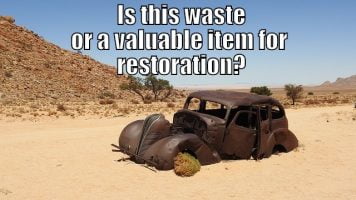 The purpose of this article is to reduce the complexities of the legal definition of waste to their essential legal framework, and thereby (hopefully) encourage operators to be more ambitious about developing their processes and products, and thus engaging with and overcoming the continuing complexities of the law.
The purpose of this article is to reduce the complexities of the legal definition of waste to their essential legal framework, and thereby (hopefully) encourage operators to be more ambitious about developing their processes and products, and thus engaging with and overcoming the continuing complexities of the law.
This is easy to say, harder to do. The law has never been helpful, and as we get to the end of 2010 there seems to be more law, but not necessarily more clarity.
[Note: Since 2010, there has been considerable progress for specific types of waste. To define “End-of-Waste” when a waste is processed, it is collected with the intention that it will be processed. This resolves the issue for those types of waste where “End-of-Waste” protocols exist.]
So what is the law on Waste?
Waste (or wastes) are unwanted or unusable materials. Waste is any substance which is discarded after primary use, or is worthless, defective and of no use. A by-product, by contrast, is a joint product of relatively minor economic value. A waste product may become a by-product, joint product or resource through an invention that raises a waste product’s value above zero.
Examples include municipal solid waste (household trash/refuse), hazardous waste, wastewater (such as sewage, which contains bodily wastes (faeces and urine) and surface runoff), radioactive waste, and others.
Definitions
There are definitions created under the United Nations Environment Program and as used by the United Nations Statistics Division via Waste – Wikipedia. Plus, there are many other definitions of specific waste types which are also available in Wikipedia.
In this article, we refer to the EU waste definition used by the waste management industry. That’s the definition in the “Directive 2008/98/EC of the European Parliament and of the Council of 19 November 2008 on waste and repealing certain Directives (Text with EEA relevance)”. www.uropa.eu. 22 November 2008. via Waste – Wikipedia
Article 3 – Definition of Waste
For the purposes of the Directive, the following definitions shall apply:
1. | ‘waste’ means any substance or object which the holder discards or intends or is required to discard; |
2. | ‘hazardous waste’ means waste which displays one or more of the hazardous properties listed in Annex III; |
3. | ‘waste oils’ means any mineral or synthetic lubrication or industrial oils which have become unfit for the use for which they were originally intended, such as used combustion engine oils and gearbox oils, lubricating oils, oils for turbines and hydraulic oils; |
4. | ‘bio-waste’ means biodegradable garden and park waste, food and kitchen waste from households, restaurants, caterers and retail premises and comparable waste from food processing plants; |
That’s simple, you say. Where is the difficulty with the legal definition of “waste”?
Source: CIWM, December 2010
Well, it is multi-faceted and, as with anything complex, there are different ways of “cutting” it. I think it is useful to see it as essentially broken down into three strands:
- EU Landfill Directive waste;
- secondary products, production residues and by-products; and
- end of waste.
1. EU Landfill Directive waste
Ultimately, everything rests on the nebulous concept of “discarding”. Article 3(1) of the revised Waste Framework Directive (2008/98/EC) (the WFD) states that “waste” means any substance or object which the holder discards or intends to discard or is required to discard.
The European Court has given a wide interpretation of “discarding,” so it is very possible to discard something that you sell for a profit! Fortunately, though, the more recent case law has moved things on considerably.
Article 2 of the WFD is also very important because it deals with wastes which are excluded from the Directive, and therefore from its regulatory controls. There are two categories of excluded material:
Those that are automatically exempt, like some uncontaminated soils, contaminated soils that have not been dug up, and natural, non-hazardous agricultural or forestry material; and those that are only exempt if they are covered by another EU law, like waste waters, extractive wastes, and some animal by-products.
The new Waste (England & Wales) Regulations 2010 reflect these WFD definitions.
2. Secondary products, production residues and by-products
There is a line of ECJ cases, between 2002 and 2007, where the European Court looked much closer than it had before at the concept of discarding, and developed the helpful concepts of secondary products, production residues and by-products.
In the leading case of Palin Granit (2002), the ECJ was dealing with leftover stone from a massive quarrying operation. This was also the situation in the later case of AvestaPolarit (2003). In Palin Granit the leftover stone was ruled to be waste. In AvestaPolarit, the opposite conclusion was reached. How come?
The Court defined the basic concept of a “production residue” as something that is not the end product that the manufacturing process directly seeks to produce. In those cases, the leftover stone was not the primary object of production. The presumption is that a production residue will be a waste, and that was the ruling in Palin Granit.
However, the Court also opened up the possibility that a production residue might not necessarily be a waste, but might instead be a by-product. A by-product would not be a waste, provided it was produced as an integral part of the production process, and was to be put to lawful use as a matter of certainty without any further processing. That was what happened in Avesta Polarit.
Things moved on in the case of Saetti (2004), where the ECJ was asked to give an opinion on whether petroleum coke (a carbon-based material produced in the refining of crude oil) was a waste or not. The Court held that the petroleum coke could not be classified as a production residue at all. Therefore, the question of the by-product did not arise. The coke was ruled to be a secondary product because it was the result of a technical process choice.
In the so-called “Spanish Pig Manure case”, pig manure used as soil fertiliser as part of a lawful practice of spreading on clearly identified parcels of land was held not to be waste. Actually, the value of this ruling lies, not so much in its classification of the pig manure, but rather in its dismissal that such a by-product could only be re-used on the site on which it was produced. In my view, this has positive implications for things like excavated, uncontaminated, soils in the construction sector.
Finally, Article 5(1) of the WFD attempts to synthesise this case law. I find the drafting of Article 5(1) concerning in some respects, since some of its wording cuts across the sensible logic of the case law, and fails altogether to deal with secondary products. We will see whether it causes trouble in practice, but it is a reminder of the volatility of this area of law, and the need to tread warily and under advice.
3. End of waste
Even when the final product is a fuel, “end of waste” (also known as “complete recovery,” as the ECJ put it in ARCO Chemie) is, in my opinion, the best form of recycling (though the WFD’s framers didn’t see it that way, which is unfortunate).
Still, there is no doubt that the law has moved on. The ruling of the Court of Appeal in the OSS case was an overdue sanity check. It has spawned the quality protocol industry animal by-products in the UK, and this model has now been expressed at the EU level in Article 6 of the WFD.
In the very short space available, I simply record here what are the essential elements of this massively complex area of law. There is really only one ECJ case, but two excellent UK court authorities, and a remarkably refreshing judgment from the Netherlands, which was endorsed here by the Court of Appeal.
The law resides in these court rulings, not in the quality protocols. The protocol idea is to be welcomed, and the EA and WRAP are to be congratulated on what is very useful guidance for those specific waste streams affected.
However, the law is in the court judgments, and in a nutshell, the end of waste criteria is that the waste is subjected to a “recovery operation,” which produces a distinct marketable product with:
- a guaranteed output product specification that can be used in the same way as an “ordinary” product,
- with no greater environmental precautions needed nor any greater impact on human health or the environment from using it as you would an ordinary product.
And try not to do anything (e.g., long-term storage) that would suggest an intention or requirement to discard.
The real commercial value to be derived from the production of by-products, secondary products, or “end-of-waste” materials, from something hitherto classed as waste, is usually within reach.
The trick is to approach the matter professionally, systematically, and with the proper attention to detail.
Complete the details below to send a link to this page to a friend.
This section was based on an article by Semple Fraser. The original article is no longer available on their website.
[Originally published in July 2011. Updated May 2024.]


